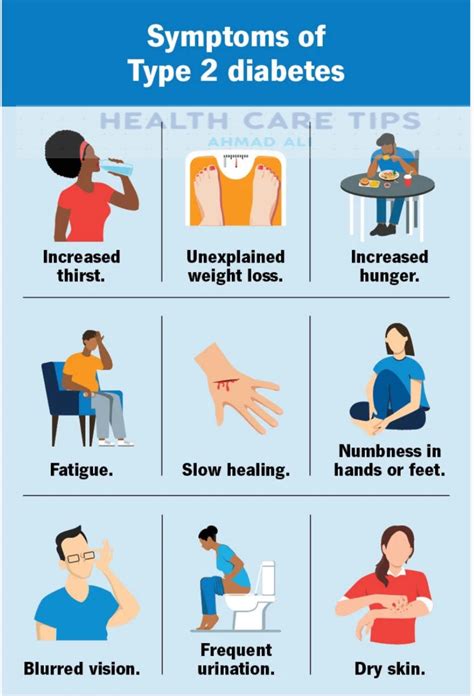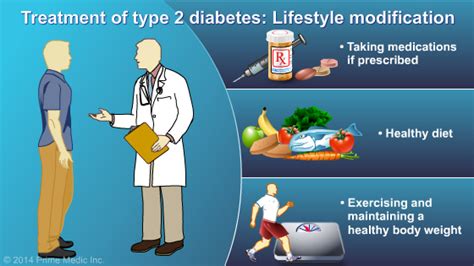Intro
Learn about Type 2 Diabetes management, symptoms, and treatment, including insulin resistance, blood sugar control, and lifestyle changes to prevent complications like heart disease and nerve damage.
Type 2 diabetes is a chronic and complex health condition that affects millions of people worldwide. It is a metabolic disorder characterized by high blood sugar levels, insulin resistance, and impaired insulin secretion. The condition is often associated with obesity, physical inactivity, and an unhealthy diet. As the prevalence of type 2 diabetes continues to rise, it is essential to understand the importance of this topic and the impact it has on individuals, communities, and the healthcare system as a whole.
The significance of type 2 diabetes cannot be overstated. It is a leading cause of morbidity and mortality globally, accounting for millions of deaths and disabilities each year. The condition can lead to a range of serious complications, including heart disease, stroke, kidney disease, and blindness. Moreover, type 2 diabetes has a significant economic burden, with estimated annual costs exceeding billions of dollars. Despite these alarming statistics, type 2 diabetes is a preventable and manageable condition, and understanding its causes, symptoms, and treatment options is crucial for individuals and healthcare providers alike.
As the world grapples with the challenges of type 2 diabetes, it is essential to explore the various aspects of this condition. From the underlying causes and risk factors to the latest treatment options and management strategies, there is a wealth of information to discover. In this article, we will delve into the world of type 2 diabetes, exploring its definition, symptoms, diagnosis, treatment options, and prevention strategies. We will also examine the latest research and developments in the field, highlighting the importance of lifestyle changes, medication, and technology in managing the condition.
Understanding Type 2 Diabetes

Causes and Risk Factors
The causes of type 2 diabetes are complex and multifaceted. While the exact causes are still not fully understood, several risk factors have been identified, including: * Obesity and physical inactivity * Unhealthy diet and lifestyle * Family history and genetics * Age and ethnicity * Certain medical conditions, such as polycystic ovary syndrome (PCOS) and sleep apnea * Medications, such as steroids and certain psychiatric medicationsSymptoms and Diagnosis

Diagnosing type 2 diabetes typically involves a combination of physical examination, medical history, and laboratory tests, including:
- Fasting plasma glucose (FPG) test
- Oral glucose tolerance test (OGTT)
- Hemoglobin A1c (HbA1c) test
- Random plasma glucose test
Treatment Options
The treatment of type 2 diabetes depends on the severity of the condition and the individual's overall health. Common treatment options include: * Lifestyle changes, such as diet and exercise * Medications, such as metformin and sulfonylureas * Insulin therapy * Bariatric surgeryManagement and Prevention

Preventing type 2 diabetes is also crucial, and several strategies have been shown to be effective, including:
- Maintaining a healthy weight and BMI
- Engaging in regular physical activity
- Eating a balanced and nutritious diet
- Avoiding tobacco and limiting alcohol consumption
- Getting regular check-ups and screenings
Current Research and Developments
Research into type 2 diabetes is ongoing, and several new developments have shown promise in recent years. These include: * The use of stem cells and gene therapy to repair or replace damaged pancreatic cells * The development of new medications and therapies, such as SGLT2 inhibitors and GLP-1 receptor agonists * The use of technology, such as continuous glucose monitoring (CGM) and insulin pumps, to improve blood sugar control and managementLiving with Type 2 Diabetes

Conclusion and Future Directions
In conclusion, type 2 diabetes is a complex and multifaceted condition that requires a comprehensive approach to management and prevention. By understanding the causes, symptoms, and treatment options, individuals and healthcare providers can work together to improve outcomes and reduce the risk of complications. As research continues to evolve, it is likely that new developments and breakthroughs will emerge, offering new hope and opportunities for those affected by type 2 diabetes.What are the main causes of type 2 diabetes?
+The main causes of type 2 diabetes include obesity and physical inactivity, unhealthy diet and lifestyle, family history and genetics, age and ethnicity, and certain medical conditions.
How is type 2 diabetes diagnosed?
+Type 2 diabetes is typically diagnosed using a combination of physical examination, medical history, and laboratory tests, including fasting plasma glucose (FPG) test, oral glucose tolerance test (OGTT), hemoglobin A1c (HbA1c) test, and random plasma glucose test.
What are the treatment options for type 2 diabetes?
+The treatment options for type 2 diabetes include lifestyle changes, such as diet and exercise, medications, such as metformin and sulfonylureas, insulin therapy, and bariatric surgery.
We hope this article has provided you with a comprehensive understanding of type 2 diabetes, its causes, symptoms, diagnosis, treatment options, and management strategies. If you have any further questions or would like to share your experiences, please don't hesitate to comment below. Additionally, if you found this article informative and helpful, please share it with others who may benefit from this information. Together, we can work towards a better understanding and management of type 2 diabetes.
